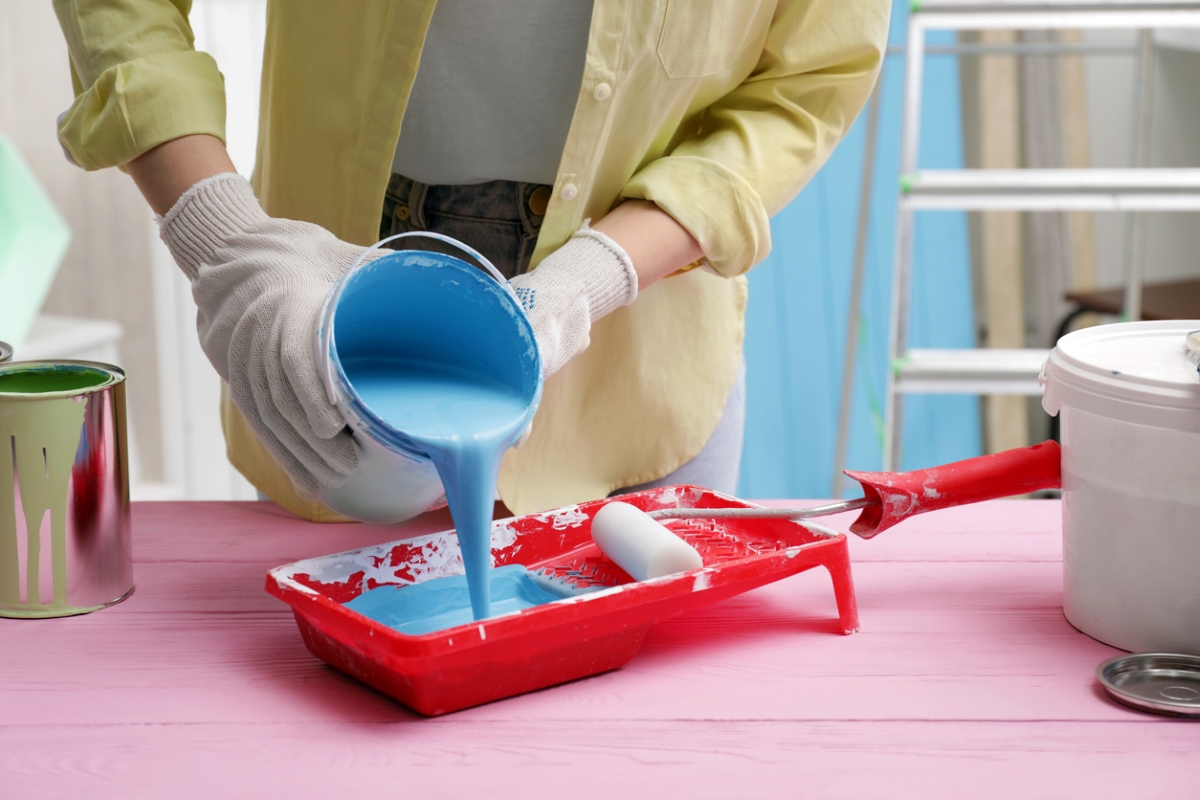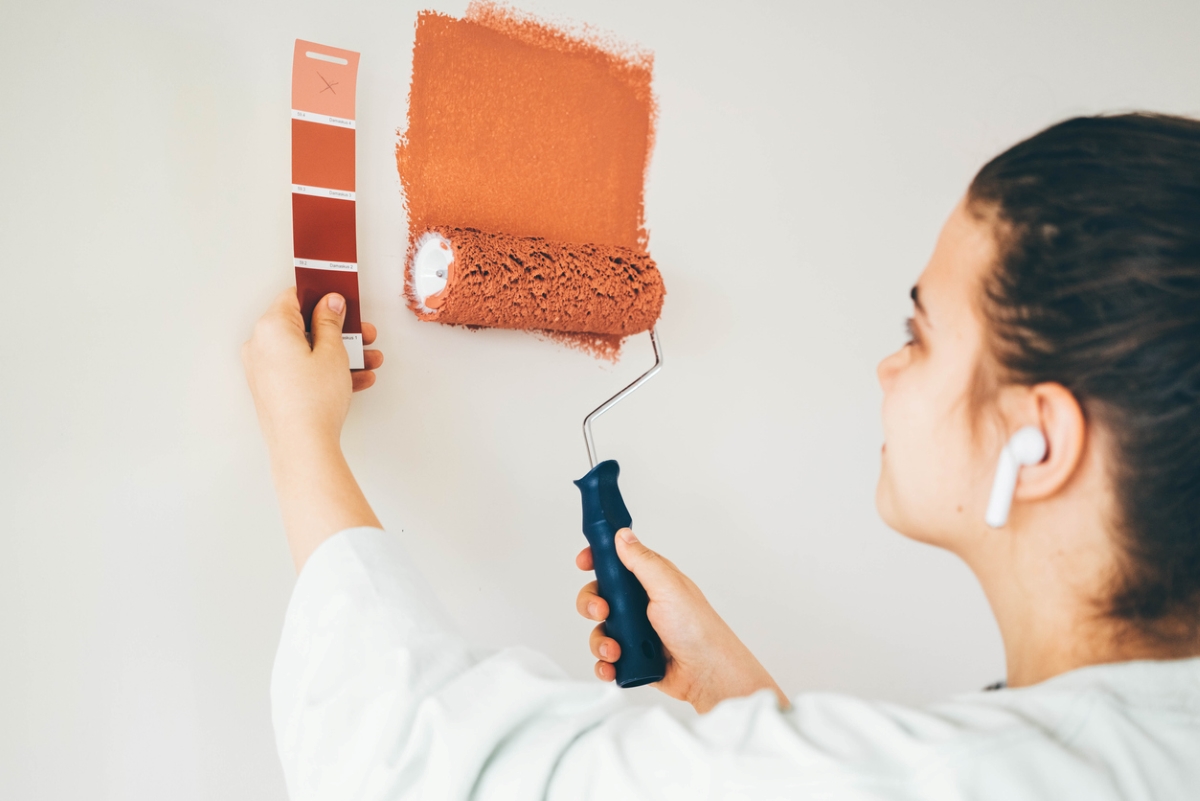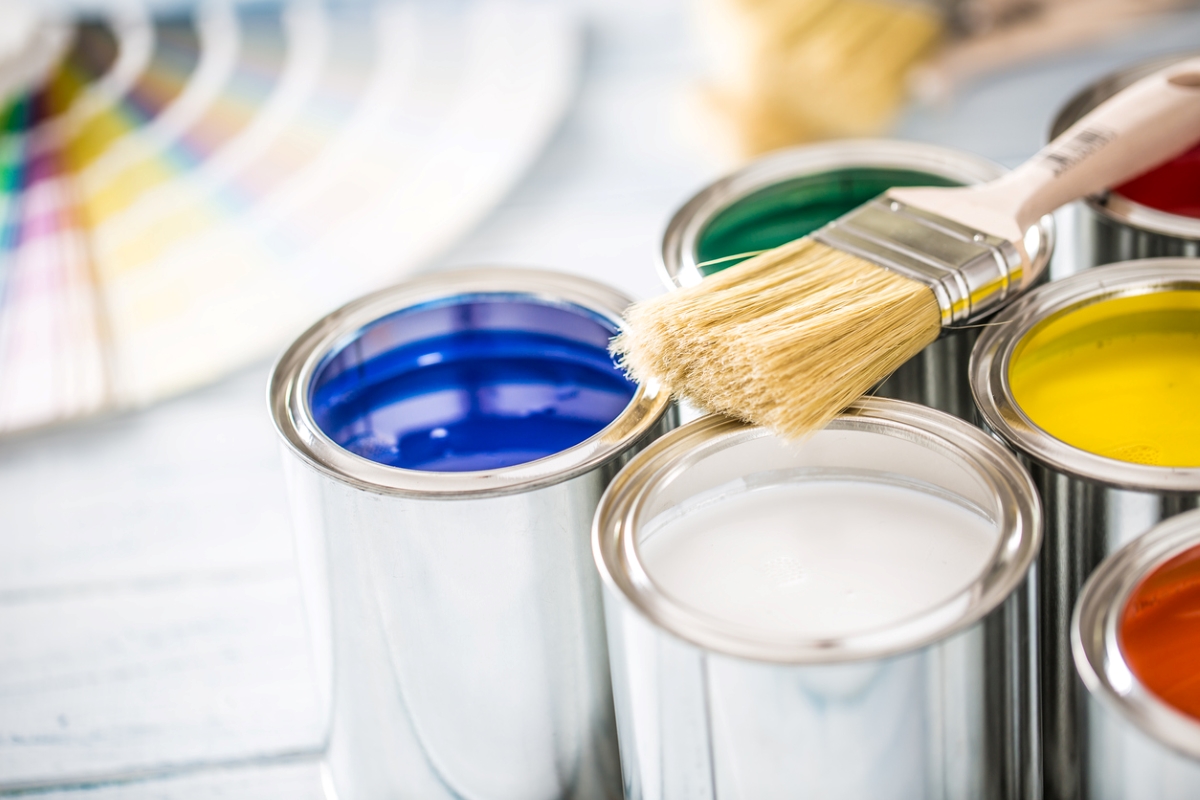We may earn revenue from the products available on this page and participate in affiliate programs. Learn More ›
DIY paint projects are oftentimes the best place to hone your home maintenance and renovation skills. Beginners can find the right paint color and grab a brush or roller, but before getting started, a common stumbling block is determining whether acrylic or latex paint is best for a painting project.
Latex paint is a water-based product with a low level of volatile organic compounds (VOCs) that is easy to use and clean up. It’s typically used for interior paint projects, while outdoor projects can be tackled with a water-based acrylic. Acrylic is similar to latex paint, but some significant differences in its composition allow for greater amounts of expansion, contraction, adhesion, and durability. Here’s a quick primer on the differences between acrylic vs. latex paint.
Both paints are water-based, but acrylic paint contains chemicals that allow for greater flexibility.
At first glance, acrylic and latex paints may seem very similar. They are both water-based solutions containing an acrylic resin. Looking more closely, however, reveals that 100-percent acrylic paint uses an uncut and undiluted acrylic resin absent from latex paint. Water-based acrylic paint includes even more VOCs, such as plasticizers, silicone oils, and defoamers, that latex paints lack entirely.
These seemingly small differences have a great effect on how much each paint can expand and contract, as well as its durability and adhesion. Due to these chemical components, acrylic paint can expand and contract better than latex paint, which is why it is frequently used for the exterior of the home. Though, it’s worth noting that some paint brands offer outdoor latex paint, which has a higher concentration or purity of acrylic resin than interior latex paint.
Acrylic paint is considered more durable than latex.

When deciding on the right type of paint for a home painting project, it’s important to think about how the area will be used. For instance, the paint for a guest bedroom doesn’t need to be overly durable, since most guest rooms are less frequently used than other areas of the home. However, the paint for a high-traffic area or even outdoors should have a superior level of durability and resistance.
Most outdoor painting projects use an oil-based paint or an acrylic water-based paint. Acrylic paint is significantly more durable than interior latex paint, allowing it to expand and contract with temperature changes, while resisting damage from sticks, leaves, and other debris. This type of paint is also resistant to water, mold, and UV radiation, making it an ideal option for exterior painting jobs.
Typically, latex paint is less expensive than acrylic.
In most cases, a latex painting project is more affordable than an acrylic painting project, so if the scope of the job stretches over a large area or through several rooms, then latex paint may be the best choice to keep the project on budget. Similarly, if you are working with a beginner DIYer, then there is a higher chance of mistakes, so purchasing a more affordable paint product will help keep the costs low.
On average, a gallon of interior latex paint costs between $15 and $60, while a gallon of exterior acrylic paint costs between $20 and $80. The broad price range is due to the color, tint, opacity, finish, and brand. The final difference in price for a single gallon of paint may not be a lot, but the larger the painting project, the more paint you require, gradually increasing the price gap between latex and acrylic paint.
Surfaces painted with acrylic or latex paint are equally easy to clean and maintain.
Acrylic and latex paint differ in adhesion, durability, flexibility, and resistance, but both are equally easy to maintain after the paint has had enough time to fully dry and cure. Even acrylic spray paint will create a smooth, abrasion-resistant surface that can be wiped down with a damp cloth or scrubbed with a sponge to remove oil, dirt, and other debris.
Washing the walls should be a regular part of home maintenance. Fingers and hands frequently leave behind oil, dirt, and grime that gets picked up throughout the day. By wiping down the walls with warm water and a gentle cleaning solution, homeowners can improve the appearance of the room. Just keep in mind that if you are using an old can of paint from storage, the finish may be affected by the age of the paint, so it’s important to check the information provided by the manufacturer to determine how long the paint lasts before it should be replaced.
Latex paint is considered more DIY-friendly than acrylic.

When considering different types of paint for a home renovation project, it’s a good idea to choose a paint that is suited for your skill level and the skill level of any friends, partners, kids, or other helpers. Latex paint is an ideal option for beginners because it is easy to apply, dries quickly, and is less expensive than acrylic paint, so it won’t be as detrimental to the project cost if some is wasted during the painting process.
DIYers can also try out new painting tools, like a latex paint sprayer, with less concern about cleanup because small mistakes can be wiped off with a damp cloth or paper towel. While acrylic paint can be cleaned up in the same way, the difference in drying time and adhesion makes it more difficult to remove if you make a mistake.
Acrylic latex paint combines the best of both worlds.
A slight difference between acrylic and latex paint is the dilution or purity of the acrylic resin. Latex paint has a diluted acrylic resin composition, while 100 percent acrylic paint uses acrylic resin that has not been cut or diluted in any way. This difference contributes to the functional gap between these products.
However, acrylic latex paint attempts to combine the ease of use and flexibility of interior latex paint with the durability, adhesion, and color retention of 100 percent acrylic exterior paint. It’s important to note that acrylic latex is essentially latex paint with a higher concentration or purity of acrylic resin. Latex acrylic paint serves as a convenient half-way point between latex and acrylic.


